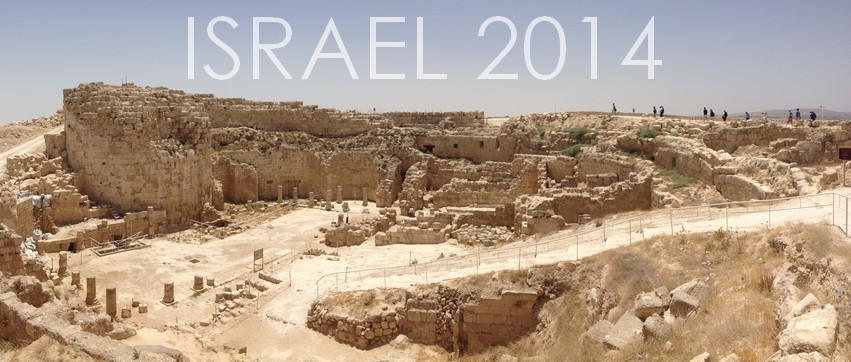
Wow…today we did so much that it’s difficult to process. It was our first day out in the field, and we went to nine different sites. Instead of trying to unpack every site in detail, I will attempt to give a quick ‘snapshot’ of each of our stops.
We started out the day on Mt. Scopus, just north of Jerusalem. Our instructor showed us how much easier it would have been for Israel’s enemies to attack from the north rather than the south, stopping to ‘scope out’ Jerusalem from the higher ground we were standing on. We also peered into a first century burial tomb and learned about Jewish burial practices.
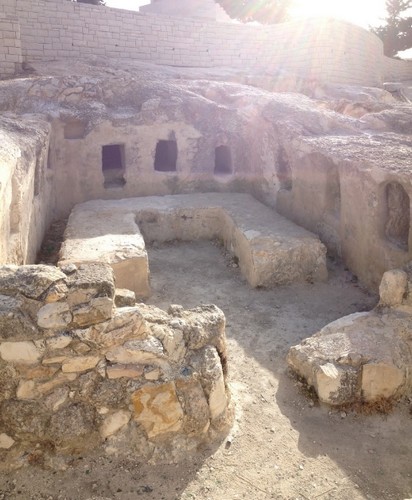
Our second stop was on the east side of the mountain, looking off into the Judean Wilderness. To the northeast we could see Anathoth, which is where Jeremiah lived. Our instructor explained the differences and variables at play between farming and shepherding life as we peered over the east side of the Mount of Olives range. Jerusalem is situated in a unique topographical area that receives more rain than it should, so just beyond the range is a much more dry and arid area not suitable for farming. Seeing the dusty brown earth sparsely littered with flecks of green challenged my previous perceptions of ‘The Good Shepherd.’ In the past, I would imagine a quiet, lush, serene scene, maybe something you’d see in a Thomas Kinkade painting. Now, I imagine a hard, patient life marked by dirt, wind, and survival.

We then went to the Sanctuary of the Dominus Flevit (The Lord Wept) on the Mount of Olives, a Roman Catholic church built on a site commemorating Jesus’ weeping over Jerusalem in Luke 19:41-44. Here we were able to observe some first century ossuaries.
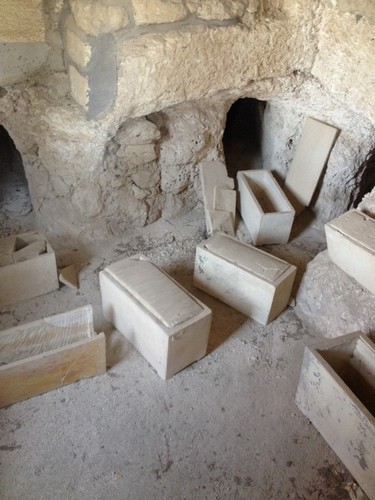
Making our way further down the mountain, we stopped at the traditional site of the Garden of Gethsemane. While we were able to take photos in the garden and spend time in silent reverence at the Church of All Nations, what was most moving for me was our instructor’s take on Jesus’ time spent praying in the garden. He pointed out that, there on the Mount of Olives, Jesus would have been in a prime location to slip away into the wilderness and escape his death. In other words, Jesus had a choice, and his option to flee would have been easy and quick. It made me appreciate all the more Jesus’ choice to give himself up.
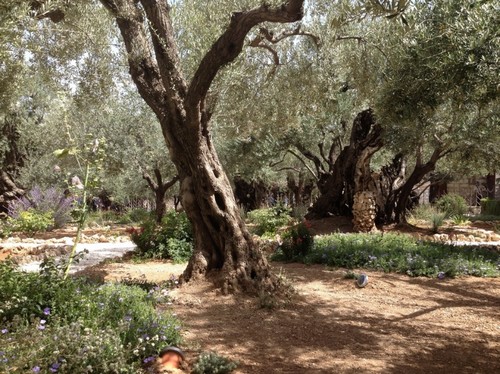
Then we drove over to Herodium and learned more about Herod the Great’s life and death. Since we were on a high vantage point and Bethlehem was visible in the distance, our instructor also used it as an opportunity to explain David’s way of life. Herodium was large and impressive, but up there on the height the heat of the day really began to beat down on us. It was at this stop that I finally caved and bought a hat to start shielding my face from the sun!
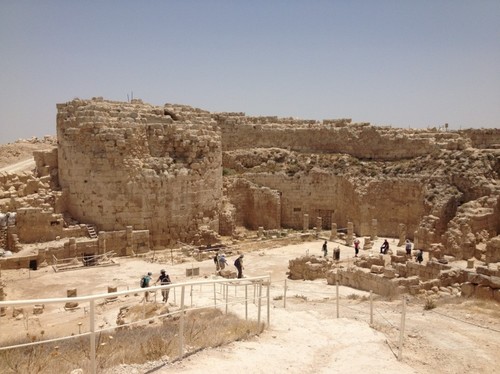
Our next stop was on the way to Bethlehem. We pulled over on the side of the road and walked into a large open area, not realizing that we were standing in the midst of a threshing floor. We learned about the threshing process, and since it seemed appropriate, our instructor helped explain some of the greater context of the story of Ruth and Boaz. While these stories might seem superfluous to some, I very much appreciate how our curriculum integrates theological elements into the discussion. As someone who is a little more conceptual, they serve as tiny ‘shots in the arm’ to keep me going.

Bethlehem, unfortunately, was a drag. We walked up to the Church of the Nativity, which is in constant disrepair. It was almost sickening to see how the political, religious, and economic tensions here have taken a toll on the area. It moves me to pray for God’s intervention, that he would finally bring his peace to the area. Regardless of whether we were at the actual birth place of Jesus or any other venerated site we’ve visited, the juxtaposition of God’s holiness and humankind’s knack for ruining everything is leaving me a little dizzy.
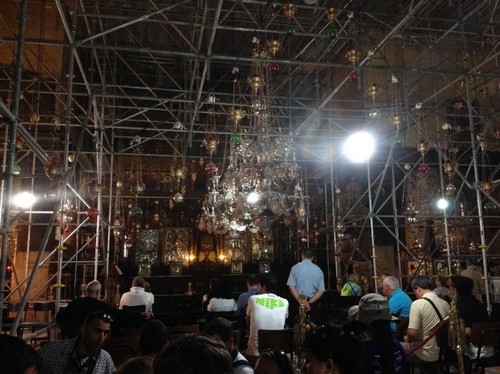
One of the last sites we visited was a field where we actually saw a shepherd tending his flock in the distance. There, our instructor made his case for reconsidering the circumstances of Jesus’ birth based upon his understanding of first-century homes and culture.
Lastly, we stopped at Ramat Rachel, an archaeological site with no confirmed connection to the Bible. As I understand it, we stopped there primarily to demonstrate that archaeology is more of an art than a science. The puzzle is still coming together, and some questions may go unanswered until the end of time. Sounds kind of like our journey of faith, eh?
